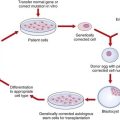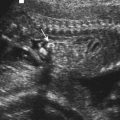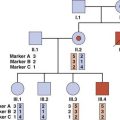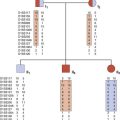CHAPTER 6: Developmental Genetics
CHAPTER 9: Polygenic and Multifactorial Inheritance
CHAPTER 13: Immunogenetics
CHAPTER 14: Cancer Genetics
A 38-year-old woman, who recently had a mastectomy for breast cancer, requests a referral to the genetic service. Her father had some bowel polyps removed in his fifties and a cousin on the same side of the family had some form of thyroid cancer in her forties. The general practitioner consults a set of guidelines that suggest a familial form of breast cancer is unlikely because she is the only one affected, even though quite young. He is reluctant to refer her.
CHAPTER 15: Genetic Factors in Common Diseases
CHAPTER 16: Congenital Abnormalities and Dysmorphic Syndromes
CHAPTER 20: Screening for Genetic Disease
CHAPTER 21: Prenatal Testing and Reproductive Genetics
A 36-year-old pregnant woman elects to undergo prenatal testing by chorionic villus biopsy after the finding of increased nuchal translucency on ultrasonography. The initial result, using FISH probes, is good news—there is no evidence for trisomy 21—and the woman is greatly relieved. However, on the cultured cells more than 2 weeks later, it emerges that there is mosaicism for trisomy 20. She undergoes amniocentesis a week later, and 3 weeks after that the result also shows some cells with trisomy 20.






